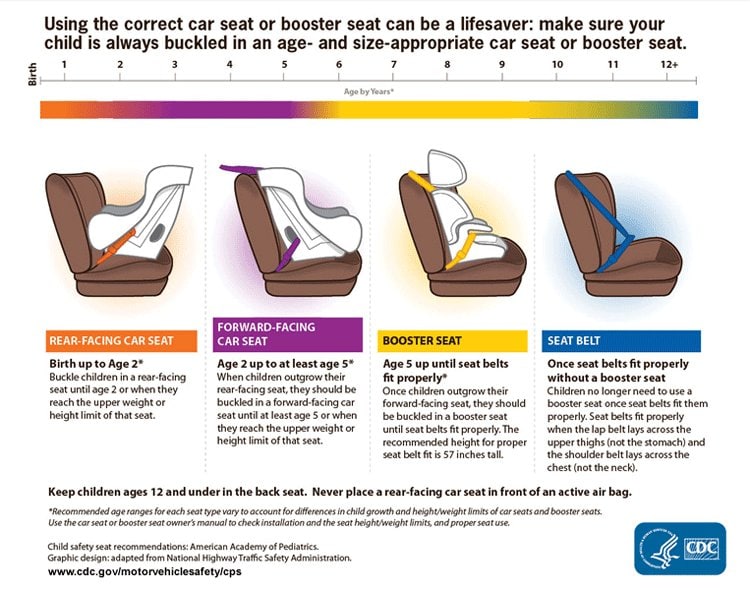Strap In: Understanding the Right Time for Booster Seats
Welcome, super parents! Are you juggling the dilemma of choosing the best booster seat for your kiddo? Fear not, because you’ve clicked on the right guide! As your little one sprouts up, it’s crucial to make sure they’re secured and cozy in the car. Transitioning from car seats to booster seats is a big step, and we’re here to ensure you have all the information needed to make your family’s journey safe and enjoyable!
When to Shift Gears to a Booster Seat
So, what’s the magical number? When do you know it’s time to switch from a car seat to a booster seat? The answer isn’t just about age; it’s about safety and comfort tailored to your child’s size.
- Height and Weight Milestones: Each car seat comes with its manufacturer’s guidelines, detailing height and weight limits. When your little champ outgrows these limits, it’s booster time!
- Age Considerations: Typically, children are ready for booster seats between the ages of 4 and 7. But remember, age is just a number; size matters more for safety!
- State Laws and Regulations: Buckle up with your local laws! Each state might have different rules about booster seat age requirements. Make sure your choice is both safe and legal.
Why Correct Booster Seat Usage is a Must
It’s a no-brainer; correct booster seat use is vital for your child’s safety. Booster seats raise your child so that the car’s seat belt fits snugly over their smaller frame, providing optimum protection. A seat belt that’s incorrectly positioned can be harmful in the event of a crash. We’re talking about a belt that should lay across the upper thighs and chest, not the stomach and neck. Correct booster seat usage can reduce the risk of serious injuries by a whopping 45%!
Stay Alert: Booster Seat Installation Tips
Your peace of mind starts with proper installation. Follow these steps:
- Backseat is the Best Seat: Always place the booster seat in the backseat of the car. It’s the safest spot away from the impact of airbags.
- Anchor it Well: If your booster seat comes with LATCH connectors, use them to anchor the seat directly to the vehicle seat.
- Seat Belt Savvy: Ensure the vehicle’s seat belt fits through the booster’s belt guides correctly for a snug and proper fit.
Selecting the Right Booster Seat for Your Star Passenger
Booster seats come in various shapes and sizes. Here’s a quick rundown:
- Backless Booster Seats: Great for older kids, these boosters are simple yet effective. Just make sure your car’s backrest is high enough to support your child’s head.
- High-Back Booster Seats: These offer more support and are ideal if your vehicle has a low or no backrest.
- Convertible Booster Seats: These seats can transform from a high-back to a backless booster as your child grows.
Choosing the right booster seat for your child can not only provide comfort during car rides but is essential for road safety. By using a booster seat until the appropriate age and size, you are helping to significantly reduce the risk of injury to your child in case of an accident.
Remember: A well-chosen booster seat is a non-negotiable co-pilot for your little one’s big adventures on the road. It’s not just about obeying the law; it’s about protecting your most precious cargo. So, be a hero in your child’s roadway journey – make the booster seat a priority!
As parents on the go, keeping our kids safe and giving ourselves peace of mind is mission-critical. Bearing the above points in mind ensures you are fully geared up to make informed decisions when it comes to your child’s road safety. Stay tuned, as we have more details coming up in the following sections of this comprehensive guide, taking you from booster basics to safety pro!

5 Things Every Parent Should Know in Preparing for Booster Seat Transition
Preparing for the booster seat stage is more than just a milestone; it’s a blend of readiness, awareness, and continuous learning. Let’s navigate through five essential things every parent should know:
1. Mastery of Car Seat Stages is Key
Know the journey: from rear-facing to forward-facing, and then to booster seats. Each transition is about maximizing safety. Stick to each stage’s guidelines until your child truly outgrows them. This isn’t just about moving forward; it’s about ensuring that with each stage, your child is as secure as possible.
2. Understand the Seat Belt Test
Even if your child seems big enough for a booster seat, perform the seat belt test. Can they sit with their back against the car seat while their knees bend comfortably at the seat edge? Does the belt cross the shoulder and chest without touching the neck? The lap belt should lie on the upper thighs, not the stomach. If you’ve checked all these boxes, you’re good to go!
3. Keeping Up with Car Seat Recalls
Stay informed about recalls – safety is dynamic, and so is product information. Make sure you register your booster seat with the manufacturer so you’ll be notified in the event of a recall. Double-checking your seat’s model against active recalls before use keeps your little one away from hidden dangers.
4. Embrace the Long Haul with Booster Seats
Patience is a virtue, especially with booster seats. Your child might need to stay in a booster seat until they are 10-12 years old, depending on their growth and your state’s laws. Rushing this process can put your child at risk, so let your guiding star be their safety, not their age.
5. Constantly Review Proper Usage and Fit
Children grow like weeds, and so should your knowledge! Regularly review the fit and adjustment of the booster seat to keep pace with your child’s growth spurts. A semi-annual check during daylight saving time clock changes can be a handy reminder to review booster seat fit and safety.
Keeping these essentials in mind prepares you not only practically but also mentally, as you confidently navigate the booster seat stage. Remember, each point we’ve talked about is a step towards ensuring that your precious little one enjoys a safe ride every single time. Safety is a never-ending road trip, and the right knowledge is your GPS to success!
Transitioning to a booster seat is a significant moment in your child’s life, marking the progression towards independence. But the true milestone is the dedication you show in following best practices for booster seat safety. With keen vigilance and a loving approach, you turn every car ride into an episode of bonding and protection.
Embrace this phase as an opportunity to teach your child about the importance of road safety. Let them be part of the process by explaining why they need to use a booster seat, how it keeps them safe, and the roles they play in ensuring a comfortable ride. Incorporating responsibility, safety, and education in the booster seat experience paves the way for well-informed future drivers!
Ready to take the next step? Stay tuned for further insights and tips on ensuring maximum comfort and protection for your little traveler. Our comprehensive guide will help you through all stages of your booster seat journey—from picking the perfect match to understanding the nitty-gritty of daily use.
Dear parents, as you pass on the torch of safety to your mini-me’s, remember that the booster seat is not just another accessory; it’s a lifesaver. With each click of that seatbelt, you’re ensuring a future filled with countless possibilities. Keep reading, keep learning, and let the road ahead be an adventure of joy and safety for your entire family!
For more great fun click here. For more information see here
Disclaimer
The articles available via our website provide general information only and we strongly urge readers to exercise caution and conduct their own thorough research and fact-checking. The information presented should not be taken as absolute truth, and, to the maximum extent permitted by law, we will not be held liable for any inaccuracies or errors in the content. It is essential for individuals to independently verify and validate the information before making any decisions or taking any actions based on the articles.




